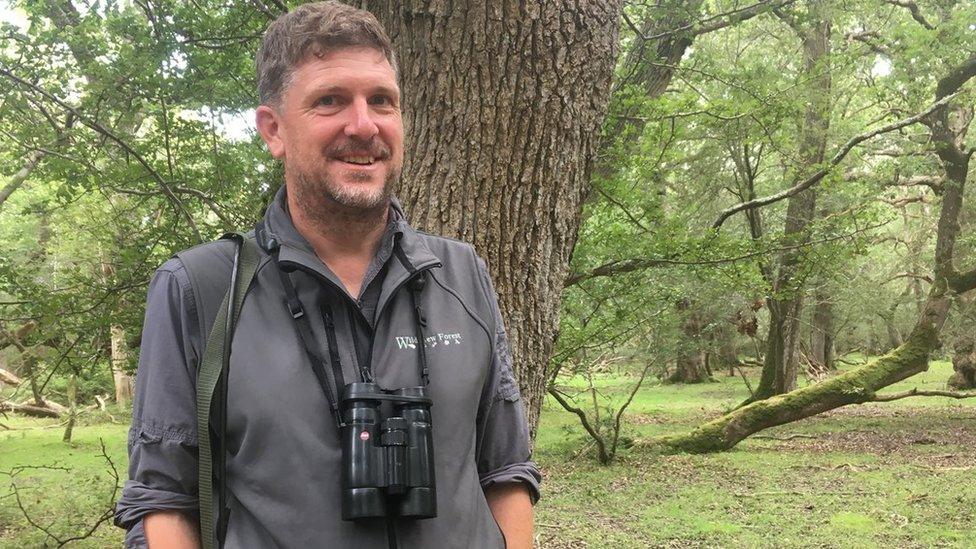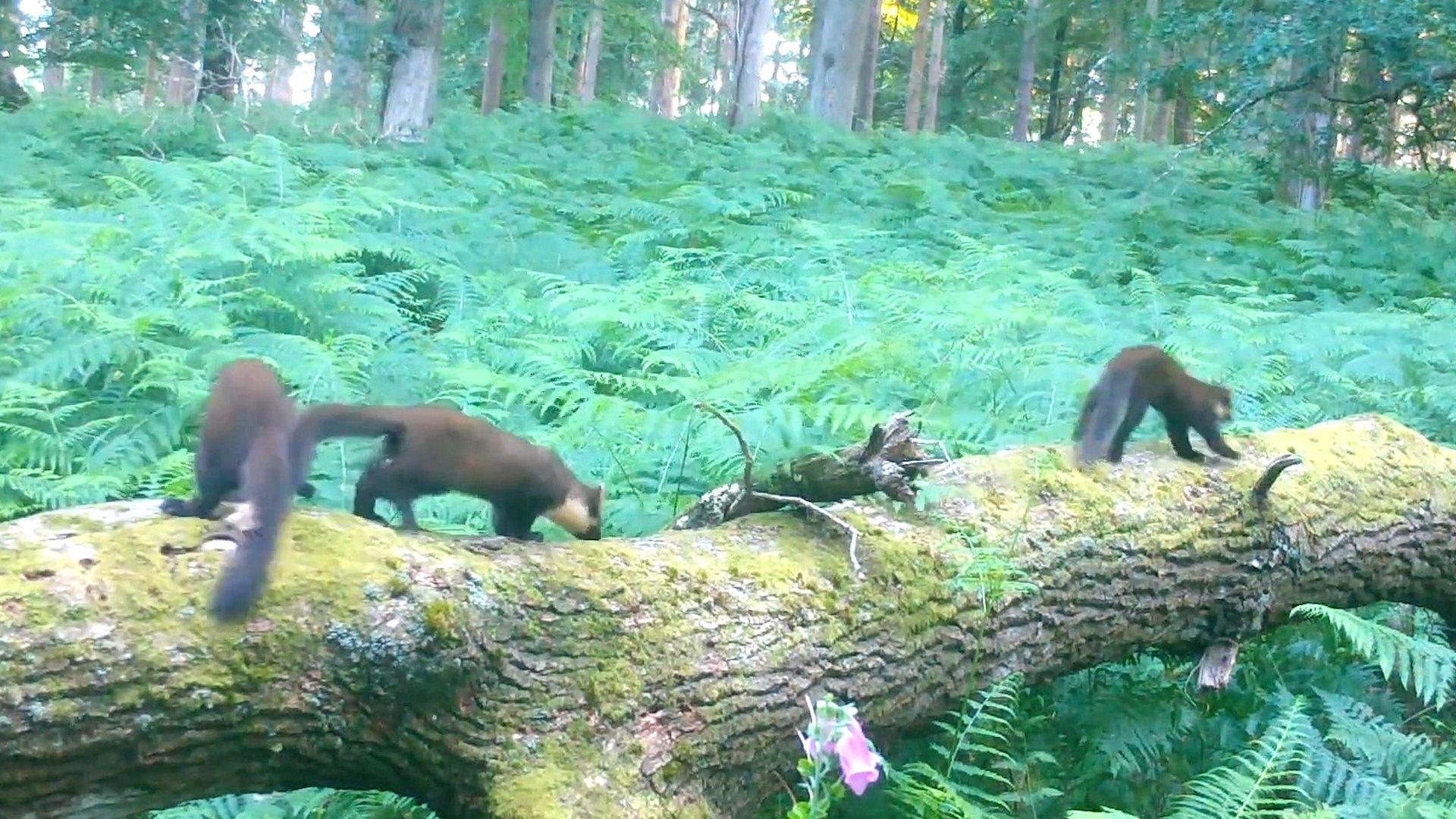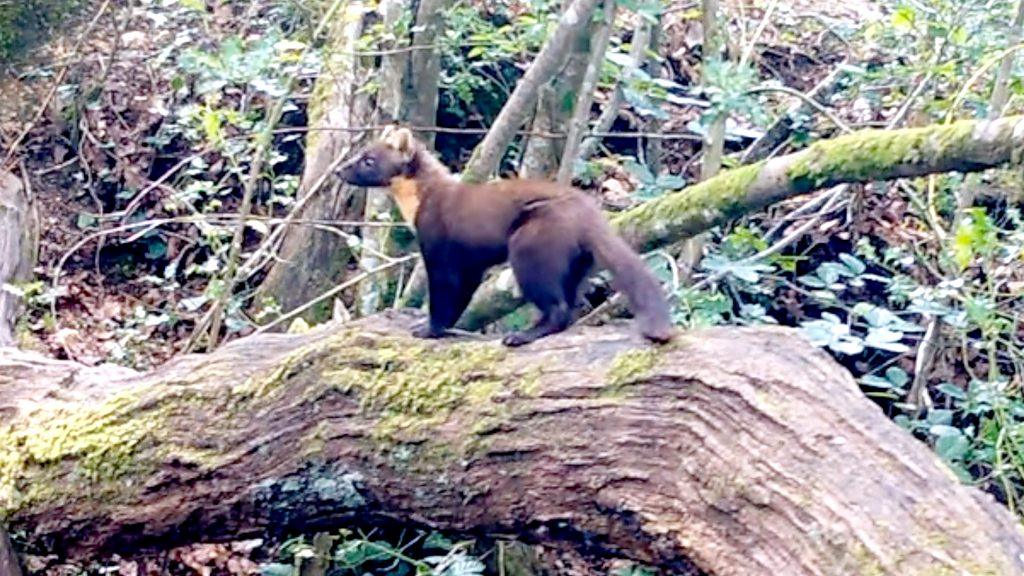DNA study into New Forest pine martens under way
- Published
The creatures sleep and make dens high up in the trees and usually only come out at night to hunt.
DNA samples from elusive pine martens are being collected as part of a study in the New Forest.
The rare mammals are now believed to be well-established and successfully breeding in the national park.
The elusive cat-sized member of the weasel family was previously only thought to have survived largely in the north of England.
Researchers are collecting genetic material in order to establish the health of the population in the forest.

Pipes lined with velcro are used to get hair samples from pine martens
Hidden cameras have shown young pine martens exploring and playing together over a number of years.
The footage was shot as part of a study aiming to determine if and how pine martens were recolonising the area.
Marcus Ward of Wild New Forest said the latest phase, collecting hair samples using pipes lined with velcro, would provide an "insight" into the forest's pine martens.
"The main thing we are looking at is the genetic diversity of the population and how healthy the population is," he said.
"By getting DNA, it unlocks other bits of information which is useful and helps us piece together our understanding of pine martens in the New Forest."

Marcus Ward of Wild New Forest has been carrying out the study into pine martens in the forest
The video footage showed pine martens prefer to use fallen trees and branches to navigate across the forest floor and to cross streams and wet areas.
The creatures sleep and make dens high up in the trees and usually only come out at night to hunt.
The pine marten study is being carried out by Wild New Forest along with Forestry England, The New Forest Study Group, Hampshire and Isle of Wight Wildlife Trust.

Pine Marten

A member of the weasel family, pine marten prefer well-wooded areas with plenty of cover and largely feed on small rodents, birds, insects and fruit.
They were all but extinct from England by 1900 due to habitat loss and being hunted for their fur.
Only a small and fragmented population remains mostly in northern England, Scotland and parts of Wales.
Every pine marten is chestnut brown in colour but each has a uniquely shaped bib - a pale yellow section of fur on its chin and throat - which makes it possible to identify and record each individual.

Follow BBC South on Facebook, external, Twitter, external, or Instagram, external. Send your story ideas to south.newsonline@bbc.co.uk, external.
Related topics
- Published27 February 2024
- Published1 December 2022

- Published15 August 2021
